The Jovian System
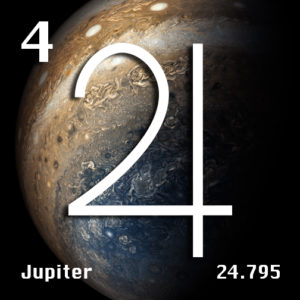
Jupiter is the largest planet in our Solar System with a diameter of 43,441 miles, almost 11 times larger than Earth. The Jovian system also has more moons than any other world, with an estimated 79 satellites. Many of these moons appear to be captured asteroids as Jupiter orbits close to the asteroid belt and shares its orbit with Trojan minor planets. These small bodies share Jupiter’s orbit at its Lagrangian points. Lagrangian points along Jupiter’s orbit are measured at precisely 60º in front of and behind Jupiter. Of Jupiter’s moons, the four Galilean moons are some of the most well-known moons of our Solar System since they are easily identifiable with just a telescope. Galileo (whom they were named after) discovered them in 1609.
Being a gaseous planet, Jupiter also has the most massive planetary atmosphere of our Solar System, with 3,000 miles in altitude. Jupiter is believed not to have a surface. This tremendous atmosphere consists of hydrogen and helium with traces of methane, ammonia, hydrogen sulfide, and water. How are these elements and compounds held together if Jupiter has no surface?
A rocky or solid core is not required for gravity to hold a gaseous planet together. Our Sun doesn’t have a rocky core. The hydrogen of Jupiter is not necessarily the same as “gases” we are familiar with here on Earth. Jupiter is in a state of liquid metal. I know that’s hard to conceive. Paul Butter discusses this bizarre state of matter in What in the World Is Metallic Hydrogen?
It may be helpful to note that Scientists believe Jupiter’s dense core consists of a mixture of elements, a layer of liquid metallic hydrogen, helium, and an outer layer composed of molecular hydrogen. You can think of Jupiter’s center as a highly pressurized gas compressor with pressure 10,000 times greater than the bottom of the ocean and 10 billion times greater than water at the Earth’s surface.
History of Jupiter
Jupiter has been observed as far back as the 7th century BC by Babylonian astronomers. Along with these early astronomers, the Chinese were also the first to observe the planet. In 1610, the four largest moons that orbit Jupiter were discovered by Galileo. These four moons are now more commonly referred to as the Galilean moons, Ganymede, Io, Europa, and Callisto. A day later, another astronomer discovered these same moons but did not publish his findings for four more years. A fifth moon Amalthea was discovered in 1892 by E.E. Barnard at Lick’s Observatory in California.
As seen in many famous photographs of Jupiter, the Great Red Spot was first discovered in 1664. There were several times when astronomers were unable to see the Red Spot until it became incredibly noticeable in 1878. Since that time, it has been seen to have faded and reappeared several times.
The Pioneer missions took place in 1973 and 1974 and were the first to capture first-hand information from planets other than Earth. with the Pioneer 10 space probe being the first to send back essential data about Jupiter and its moons. Pioneer 11 visited the planet exactly one year later focused on studying the Great Red Spot as well as calculating the mass of the Galilean moon, Callisto.
The Galileo probe was the first to orbit this planet back in 1995. It remained in orbit for more than seven years. When the planetary probe completed its mission in 2003, it was sent to die a sad, vaporizing death by plunging into the atmosphere of Jupiter. Weirdly, this effort was similar to the Prime Directive in Star Trek. Scientists wanted to ensure the probe didnt crash into Europa, destroying or possibly contaminating life if it exists on the moon.
The Voyager program took place in 1979. Voyager 1 visited Jupiter in March 1979, followed by Voyager 2 in July 1979. The first probe remained on the planet for a couple of days, sending back numerous close-up images of Jupiter. Voyager 2 discovered the rings of Jupiter, found plate tectonics on Ganymede, volcanoes on Io, and many different craters on Callisto. These spacecraft discovered additional, smaller moons, Metis, Adrastea, and Thebe.
The Cassini probe was heading to Saturn when it visited the planet in 2000. It took roughly 26,000 images of the planet as it passed by. Cassini also found another significant spot near the north pole of Jupiter and sent back photos of the moon, Himalia.
The New Horizons probe was heading to Pluto when it flew by Jupiter in 2007. It studied one of Jupiter’s outer moons, Elara. It also studied a small storm, the Little Red Spot, which has been growing over time.
The latest mission to Jupiter was the Juno Mission in 2016. It is expected to conduct nearly 40 orbits in just under two years. Juno’s primary mission is to study the gravity field, atmosphere, magnetic field, polar magnetosphere, and possible composition of Jupiter. We have received some of the most beautiful photos of Jupiter as Juno orbits the planet in the process.
There are two future missions also being planned. One is called JUICE, which stands for Jupiter Icy Moon Explorer, which will be conducted by the European Space Agency. The next NASA mission will occur in 2025 and will be expected to observe Europa.
Finding Jupiter in the Nighttime Sky
Jupiter is the fourth brightest object in the night sky, coming in at an apparent magnitude of -2.2. For reference, the apparent magnitude of the Sun is -26.7, the Moon is -1.5, and the brightest star, Sirius, is -1.5. Only the Sun, Moon, and Venus are brighter than Jupiter.
Since Jupiter orbits the Sun further out than Earth, the planet reaches a position for optimum viewing via a telescope every thirteen months, during “opposition.” “Opposition” for a planet within our Solar System occurs when the planet appears opposite the Sun in the sky or celestial sphere. During this time, the Sun, Earth, and the planet form what we call a “syzygy” or straight line astronomically speaking.
During the same thirteen-month time period, or 398 days, the Earth also catches up to and passes Jupiter. As this occurs, Jupiter appears as though the planet moves backward across the sky in comparison to everything else. This “movement” in the sky is called “retrograde motion.” This retrograde motion lasts for about four months or around 121 days.
Hint: “Astronomically” refers to how astronomical objects such as the Moon, Sun, Earth, other planets, and stars as they are in space. “Celestial” refers to how these same objects appear in our skies. Syzygy and orbits are astronomical terms, while retrograde motion, apparent magnitude, and celestial sphere are celestial terms.
Jupiter's Physical Features
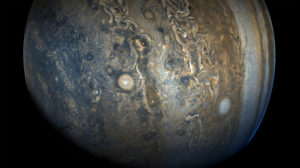
Jupiter is a giant amongst planets in our solar system, being 120 times the size of Earth, over two times larger than all of the other planets in our Solar System combined, and 1/10th the size of the Sun.
Jupiter’s atmosphere is thought to be the largest in the Solar System, spanning up to 5,000 miles. In comparison, Earth’s atmosphere as we know it expands to 62 miles where it meets the “Kármán line” or the division between our atmosphere and space.
The upper atmosphere of Jupiter is comprised mainly of hydrogen and helium, with frozen ammonia making up the outer layer of the atmosphere. Scientists believe that the chemical composition of Jupiter’s atmosphere and its pressurization may produce precipitation of helium and other elements within Jupiter’s atmosphere.
There is a clear division between our atmosphere and the ground we are on Earth. Things aren’t the same on Jupiter. Jupiter’s enormous atmosphere gradually transitions to a highly compressed liquid interior. The core is thought to be rocky, with a layer of metallic hydrogen wrapped in another layer of molecular hydrogen.
Jupiter’s most predominant feature is the Great Red Spot. The Great Red Spot is a continuous storm over 10,000 miles wide (1.3 times the diameter of Earth) that has raged for at least 357 years. Although the storm has been going on for hundreds of years, it is slowly shrinking and slowing down.
The Galilean Moons of Jupiter
The Galilean Moons are the most well-known group moons of the Solar System. They are also the largest planetary bodies in the solar system, with only the Sun and the eight planets being larger. The names of these four moons are Io, Ganymede, Europa, and Callisto. They were discovered by Galileo. All of these moons were names given from Greek as different names of lovers that belonged to Zeus. Io is the fourth-largest moon located within the solar system and has over 400 active volcanoes. It even has mountains that are larger than Mount Everest.
Europa is one of the most fascinating places in our Solar System. It’s slightly smaller than the Moon and has the smoothest surface of any known solid object in the Solar System. Europa is thought to have liquid water located underneath the frozen exterior, making it the best place to look for life outside of Earth in our Solar System.
It has a very thin atmosphere composed primarily of oxygen. Its surface is striated by cracks and streaks, whereas craters are relatively rare. In addition to Earth-bound telescope observations, Europa has been examined by a succession of space probe flybys, the first occurring in the early 1970s.
Ganymede is the largest moon in our Solar System and the only moon known to have a substantial magnetosphere. The magnetic field causes auroras in regions circling the moon’s north and south poles, much like the auroras here on Earth. Like Europa and a few moons, Ganymede is thought to have an atmosphere and subterranean ocean, overlying a liquid iron and nickel core that is believed to generate Ganymede’s magnetic field.
Images from Voyager indicate the moon has had a complex geological history. Ganymede’s surface is a mixture of two types of terrain. 40% of Ganymede’s surface is highly cratered dark regions, and the other 60% is covered by a light grooved terrain that forms intricate patterns across Ganymede. These patterns or grooves in its surface are described as “sulcus,” meaning a groove or burrow.
Callisto is the second-largest moon of Jupiter and the third-largest moon in the Solar System. Callisto orbits about 1,170,000 miles from Jupiter, taking about 17 Earth days to complete one orbit of Jupiter. Callisto’s surface is the most heavily cratered in our Solar System. Along with craters, Callisto’s surface is covered with small, sparkly, frost-like deposits at the tips of high spots, surrounded by a low-lying, smooth blanket of dark material. Interestingly Callisto does not show any signs of subterranean processes such as plate tectonics or volcanism. This may be because Callisto is the only Galilean moon that is not in orbital resonance. Thereby, it’s not subjected to the same tidal heating as the other Galilean moons. Callisto also orbits slightly outside Jupiter’s violent magnetosphere, further saving it from structural stress due to external forces.
Io is the innermost of the Galilean moons as well as the smallest. Io has some very unique features. It has the highest density of Galilean moons and the least amount of water of any known object in our Solar System. But the most exciting part of Io is that it has over four hundred active volcanoes making it the most geologically active object in the Solar System.
This extreme geologic activity results from tidal flexing from friction generated within Io’s interior as it is tugged on between Jupiter and the other Galilean satellites. Most volcanoes produce plumes of sulfur and sulfur dioxide that climb as high as 300 miles above the surface. Its surface comprises extensive plains coated with sulfur and sulfur dioxide and dotted with hundreds of mountains that have been uplifted by extensive compression at the base of Io’s silicate crust.
Io and other Galilean moons are bright enough to be viewed from Earth with binoculars but can easily be made out individually with a telescope. The moons have an apparent magnitude that ranges between 4.6 and 5.6 when Jupiter is at opposition and are about one unit of magnitude dimmer when Jupiter is in conjunction. You may have difficulty observing the moons since the moons are so close to Jupiter, and you are obscured by its brightness. The moons are separated by 2 to 10 arcminutes from Jupiter, close to the limit of human visual acuity. Ganymede and Callisto, at their maximum separation, are easiest to point out.
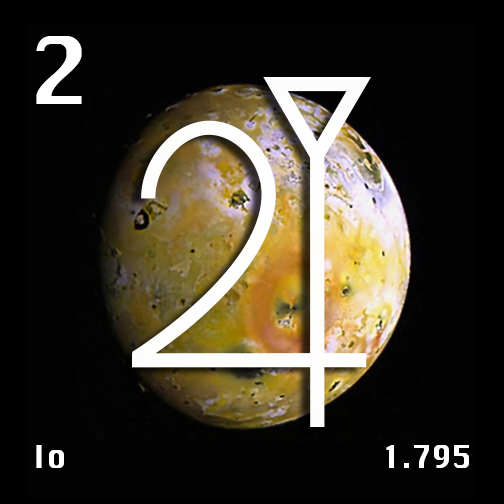
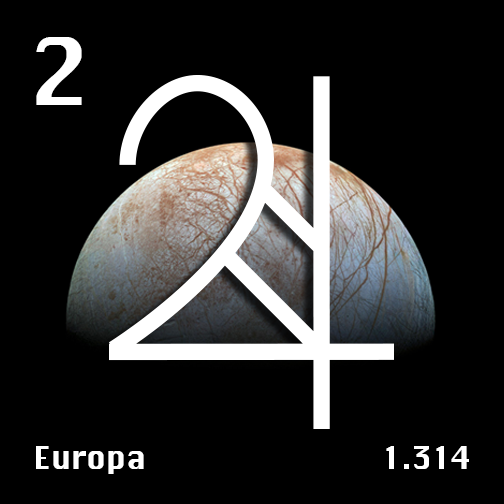
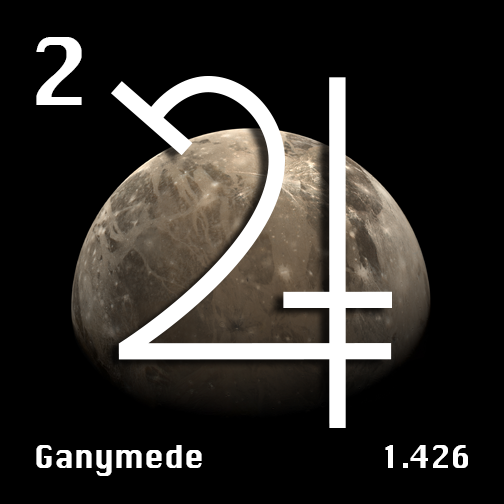
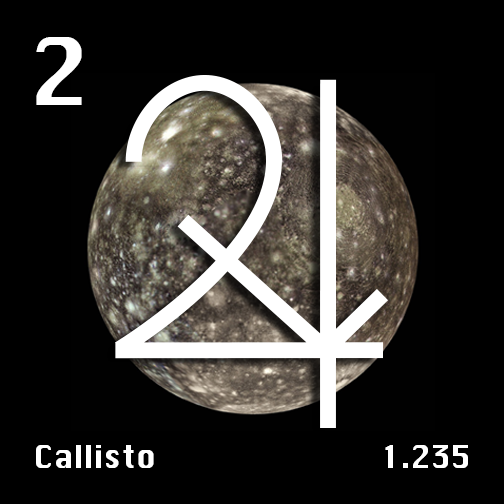
Irregular Moons of Jupiter
The vast majority of Jupiter’s moons are irregular. “Irregular” means the moon follows a distant, inclined, and often eccentric and retrograde orbit.
Of the irregular moons, Jupiter has five distinct families of satellites with two moons who do their own thing, Carpo and Themisto. The five groups are Himalia, Carme, Ananke, Pasiphae, and Amalthea.
The Himalia Group contains the fifth largest moon orbiting Jupiter, named Himalia. The other members of the family include Leda, Elara, Dia, Lysithea, Jupiter LXXI, and Jupiter LXV. The International Astronomical Union (IAU) reserves names for moons of Jupiter ending in -a for the moons in this group to indicate retrograde motions relative to Jupiter.
It is believed that the group is a remnant of the break-up of an asteroid from our Solar System’s asteroid belt. The radius of the parent asteroid is theorized to be around 89 km, slightly larger than that of Himalia, which retains approximately 87% of the mass of the original body.
The Carme Group consists of eleven moons, Carme, Taygete, Eukelade, Jupiter LVII, Chaldene, Isonoe, Kalyke, Erinome, Aitne, Kale, Pasithee, and S/2003 J9. These moons orbit Jupiter relatively close to each other, separated by less than 700,000 km in semi-major axis and less than 0.7° in inclination.
This orbital dispersion suggests that the entire Carme group may once have been a single body that was broken apart by a major impact.
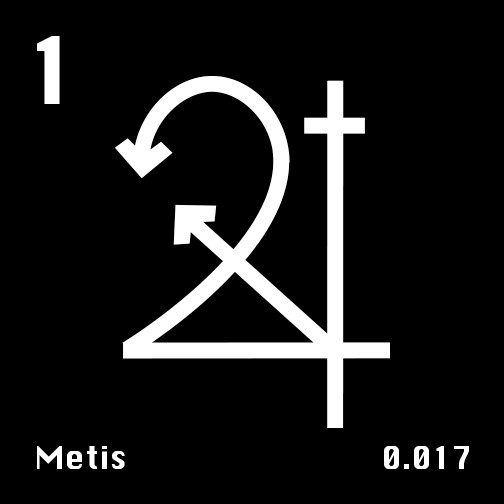

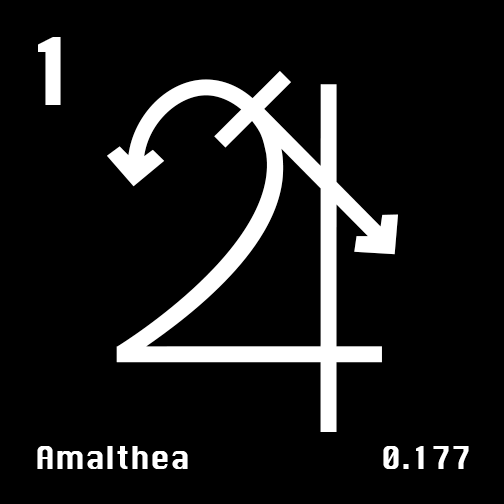
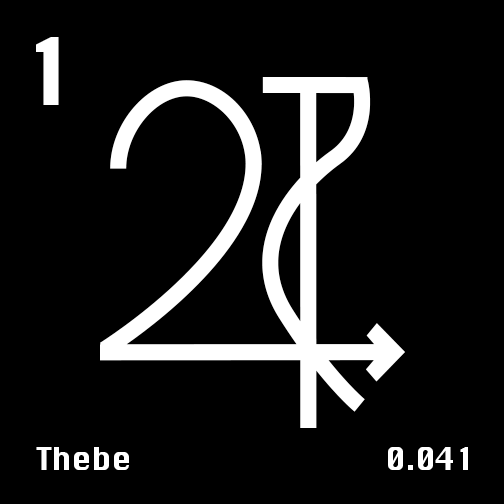
The Ananke Group consists of Ananke, Praxidike, Iocaste, Harpalyke, Thyone, and Euanthe. As with the other Jovian satellite families, this family is believed to be the remnants of an asteroid collision with Ananke accounting for more than 90% of the mass.
The Pasiphae Group consists of Pasiphae, Sinope, Callirrhoe, Megaclite, Autonoe, Eurydome, and Sponde. You notice that the moons of this group end with an “e”. That’s because the International Astronomical Union (IAU) reserves names ending in -e for all retrograde moons, including this group’s members. Pasiphae and Sinope are the largest moons in this group, nearby receiving the nod for symbols.
The Amalthea Group is another set of moons found around Jupiter. This group is also made up of four moons. These moons are Thebe, Andrastea, Metis, and Amalthea. These moons help make up the rings of Jupiter. Metis is the closest moon to Jupiter. Adrastea is the next closest moon and is the smallest. Amalthea is the third closest moon and has water ice on its surface. It has many other unknown elements and may contain many different craters and ridges. Thebe is the last inner moon and has many craters and mountains on its surface.
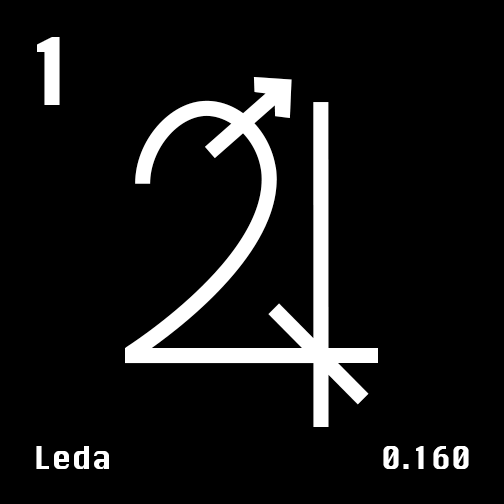

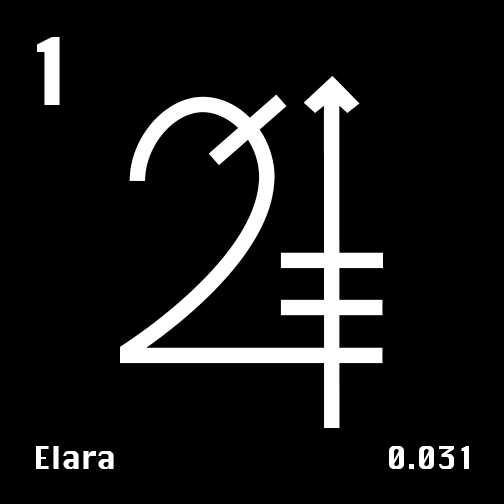
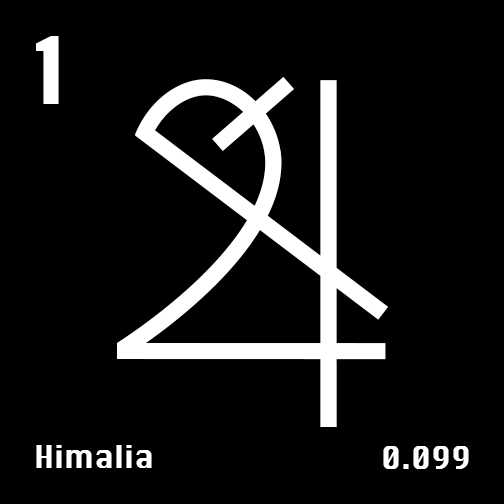
Ananke is a retrograde irregular moon of Jupiter discovered by Seth Barnes Nicholson at Mount Wilson Observatory in 1951. Ananke received it’s name from the mythological Ananke, the personification of Necessity, and the mother of the Moirai (Fates) by Zeus. Upon discovery, Ananke’s original name was Jupiter XII, but was later named in 1975.It is believed that Ananke formed from the destruction of an asteroid which produced the Ananke group of satellites. Ananke is the largest of the Ananke satellites with a radius of around 14 km and orbits Jupiter at a distance of around 21.3 million miles. The satellite takes about 630 Earth days to complete one orbit.
Sinope has a highly-eccentric and inclined retrograde orbit. These orbits are continuously changing due to and planetary perturbations. Although Sinope belongs to the Pasiphae group, Sinope could be also an independent object, captured independently, unrelated to the collision and break-up at the origin of the group. Sinope is also known to be in secular resonance with Jupiter, similar to Pasiphae. However, Sinope can drop out of this resonance and has periods of both resonant and non-resonant behavior in time scales of 10 years.
Pasiphae is a retrograde, irregular satellite of Jupiter discovered in 1908 by Philibert Jacques Melotte. Pasiphae was named after the mythological Pasiphaë, wife of Minos and mother of the Minotaur from Greek legend. Pasiphae was discovered on a plate taken at the Royal Greenwich Observatory on a winter night in 1908. It received the provisional designation 1908 CJ, as it was not clear whether it was an asteroid or a moon of Jupiter. It was confirmed to be a moon of Jupiter later that year. Pasiphae is a part of a larger group of satellite that orbit Jupiter at distance around 23 million km from Jupiter.